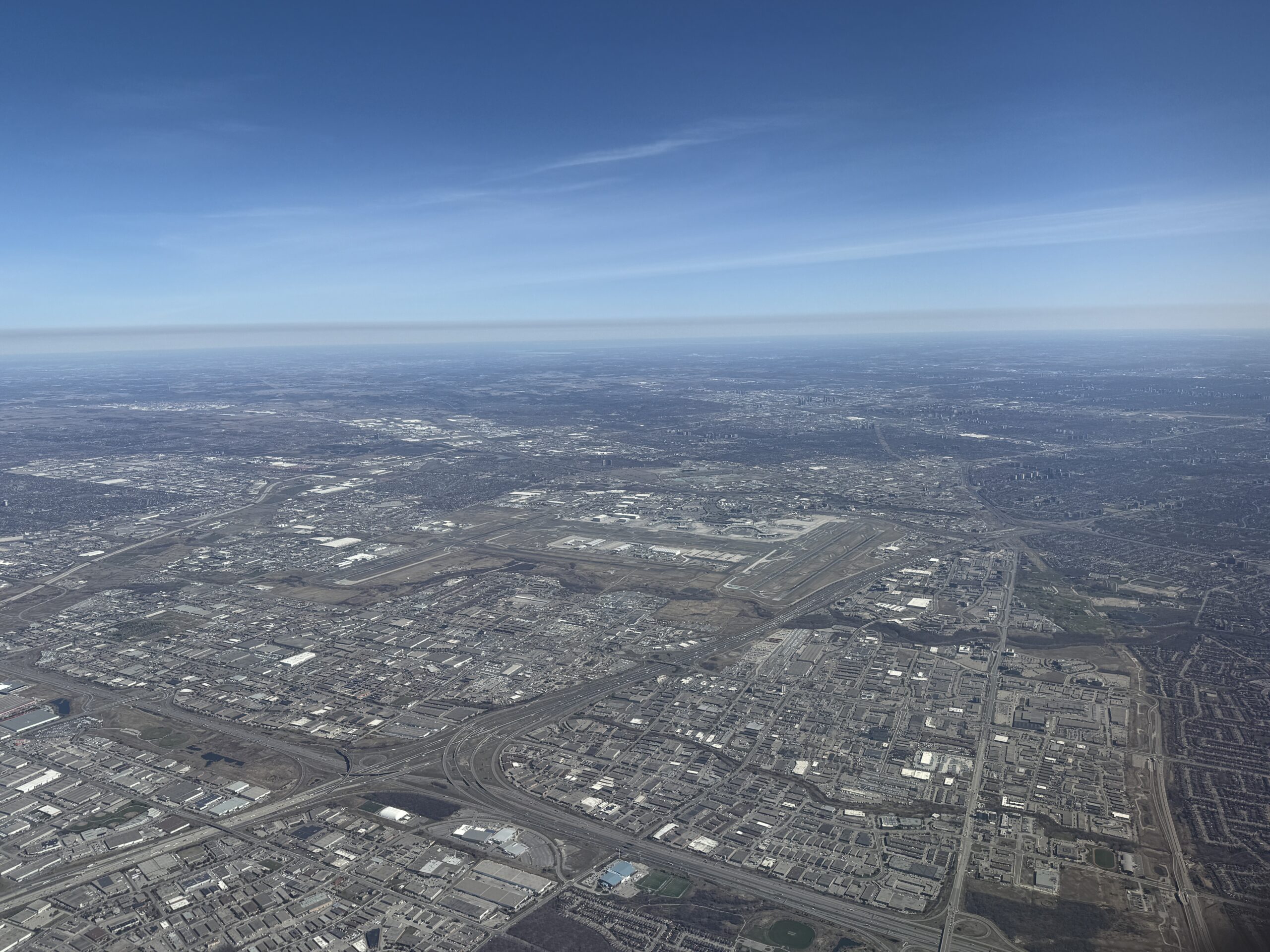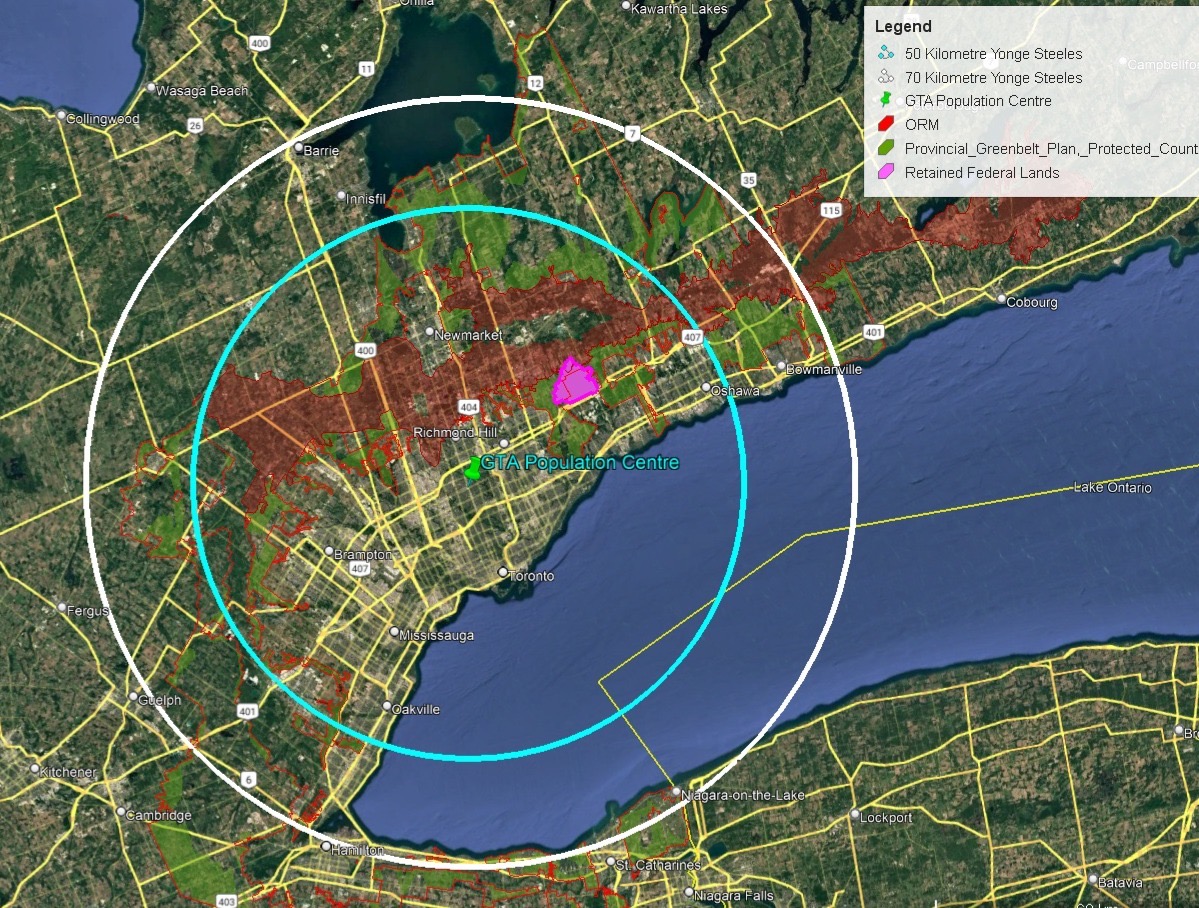By Ted Nickerson
First, an admission: I am a long-time supporter of the full economic development of the federal Pickering lands, including a new major airport. Sure, I was disappointed by the federal decision not to build an airport in Pickering. I was surprised, too, since all studies commissioned over the last 20 years by the federal government indicated that an airport would be required soon. Though each report had different in-operation dates, before 2036, it appears to be the consensus.
But I am not devastated by the announcement. Why? Because the need for another major airport in the GTA (Greater Toronto Area) has not gone away. How can I say this? Let’s look at the capacity situation in terms of commercial passenger demand from now to 2051.
The decision not to use the lands for an airport at Pickering was political, a reckless action by a departing Prime Minister to reward people who supported his ideology for years while he still held power. The facts for an airport do not support that action. It flies in the face of the need for economic growth away from Canada’s dependency on US transportation infrastructure and trade. Hopefully, the new Prime Minister, regardless of political affiliation, will not proceed with this terrible decision.

In 2024, North American commercial aviation recovered from COVID back to the 2019 levels. The USA reached 106%, Mexico 121%, and Canada’s Top 8 airports 102%. Unfortunately, within that figure, the GTAH (Greater Toronto and Hamilton) airports were at 94% of their combined 2019 passenger performance. Using that 94% level as the starting point and applying IATA’s growth forecast for North America (2024-2043 period) and Canada’s 15-year average experience pre-COVID yields the following results:
- By the 2035 – 2037 period, passenger demand will reach/slightly exceed the GTAH aviation network’s commercial passenger capacity.
- By 2039 – 2044, the annual passenger demand deficit could be 4 million to 10 million.
- By 2051, the annual passenger demand deficit could be 30 to 50 million.
- The GTAH will need another commercial airport open for passenger flights around 2036.
So, if not at Pickering, what is the government’s plan?
Finding a new location in the GTA will be a formidable and thankless task.

The following graphic was prepared to spark such a discussion. The centre of mass for the GTA population is assumed to be the intersection of Yonge Street and Steeles Avenue. Consider that Toronto Pearson will reach full planned capacity. A new airport will need 1200 to 1500 hectares of land (up to 4000 acres). The new airport must be conveniently located to efficiently serve the residents of the GTA as well as arriving visitors. Therefore, a new airport should be located within 50 kilometres of that intersection.
Look closely at the picture and you will see that most of the land within a 50-kilometre radius of Yonge and Steeles is already in residential, commercial, or industrial use. The next closest area for a new airport then becomes the ORM (Oak Ridges Moraine)/ Greenbelt.
No! No! No!
Any government’s mere mention of, let alone actual, expropriation of the required 1200–1500-hectare plot of land in the Greenbelt, will immediately raise the ire of landowners, farmers, local municipalities, NGOs and especially homeowners.
Looking beyond the ORM/Greenbelt, there is no viable choice at all. Newmarket? …up the 400 Highway halfway to Barrie? The west is out because it could seriously impact the operation of Toronto Pearson Airport.
A new airport will require extensive road, transit, and rail connections. The federal Pickering Lands site has access to this key infrastructure.
As a reference, Mirabel Airport is approximately 45 kilometres from the centre of Montreal. It failed as a commercial passenger airport because commercial passengers couldn’t easily get to and from the airport. It was a fundamentally bad decision made worse by the lack of political action to build the required road and rail transit connectivity at the same time as the airport. We can’t afford to repeat that decision in the GTA.
Any greater distance, beyond 50 to 70 kilometres, results in unacceptably long commutes for travellers wanting to come to the GTA or those people within the GTA wanting to fly anywhere else. People are not going to put up with the cost or inconvenience of accessing a remote commercial airport.
In short, expropriating land for a new commercial airport in the GTA will be a nightmare for any government, regardless of political affiliation. It makes no sense to build it outside of the GTA. However, good governance demands that a new airport in the GTA cannot be avoided.
The solution is obvious. Plan for the airport on the federal Pickering lands (the pink area on the graphic Retained Federal Lands). The government already owns the land and has held it for over 50 years for an airport. The land is about as near-urban a location as one can get. The operation will not interfere with Toronto Pearson. The potential for transit access is huge – Highways 7 and 407 on the doorstep, north-south access to York and Durham transit networks, Highway 401, a planned Highway 407 Transitway, as well as future rail service on the CPKS Havelock line to downtown Toronto if High-Speed Rail is implemented.
What action is needed now? Rescind the previous Prime Minister’s promised cancellation of an airport on the federal lands. Preserve the Retained Federal Lands for full economic development, including an airport.
Take these lands back from the Rouge National Urban Park. It is expected that park visitors will not be able to access the land promised to the Park since most of those lands will not be open to the public. It is currently leased to private businesses and farmers. Do not permit any development on or near these lands that precludes their future economic development, including an airport.
The events of the last few months demonstrate that Canada, as well as other nations, need stronger global trade ties and to become far less reliant on and less subject to coercion by the United States. Both major federal political parties support the massive infrastructure developments that will connect Canada to other nations.
Building Canada into a strong economic powerhouse connected to the world should leverage the power of aviation. Starting the development process in a timely manner to enable a new airport to be built in the GTA, without diverting public funds from social programs, fits that vision.
Canada faces severe constraints on development, not just for airports but across residential, commercial, and infrastructure projects. Most construction must occur on farmland surrounding major cities, as these areas are close to the workforce. Wetlands and woodlands, deemed even more untouchable than farmland, are off-limits. Environmental groups, often backed by government grants and donations, fiercely oppose development. Organizations like the Suzuki Foundation and Environmental Defence advocate for preserving farmland and climate at all costs, always prioritizing ideology over practicality. Many of these groups, staffed by well-meaning but inflexible activists, have shifted from traditional community service to rigid environmental advocacy. Their influence, deeply embedded in Canada’s political system, mirrors entrenched policies like dairy supply management. This resistance to development stifles economic growth and erodes living standards, leaving Canada trapped in a cycle of stagnation with little hope for reform.
This is a well thought out plan that makes an abundance of sense. The federal government needs to act immediately to support this plan.
This is pure common sense and a solid plan that will inject some well-needed fuel into Southern Ontario’s aviation infrastructure. It’s a workable solution to a potential unworkable situation when Pearson starts to seriously strangle itself. The beauty of building a new airport from ground zero will be to take advantage of new building technology, new ATC and NAV technology and to anticipate and prepare for future energy solutions including the electrification, or alternative, for all aircraft.
CAPACITY , Toronto’s , in regards to Pickering is a contractual issue. The formulae for toronto’s capacity is real, published by the GTAA, simple, high school math. That formulae pair is over 50 years old. Gtaa did the mathematics incorrectly in 2008. They updated it in 2017, exposing their errors, increased their throughput without inclusion in the calculation and repeated their previous errors.
There is no P for passengers in that calculation.
Current calculations suggest capacity without change in >250 years. Beyond foreseeable future with an annual aircraft movement increase of ~2300 / year.
The current constraint to capacity is terminal gates …see kpmg study and gtaa chair remarks to Durham region last November.
Gtaa forecast 60 new terminal gates from the current 90 by 2037 in their 2017 plan.
To date none have been built. They do not now forecast movements to exceed 2018 levels till 2028. See 2023 annual report.
Maybe they might build 4 new t gates by 2037. Historically they need 1 every 2 years.
Gates cost 200M $ each according to durham board member As is 12 B $ per plan.
And they are broke.
This article could use a strong re-edit. Parts of it go off track.
That project should be shovel ready by now and of i remember has tons of ea done. Bring it to pp after he’s elected on the 28th and it could happen fast!